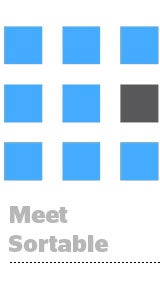 Optimizing a programmatic ad stack today involves constant manual adjustments. More demand? Move floor prices up. Less demand? Dial them back down. It’s pesky work for ad ops teams.
Optimizing a programmatic ad stack today involves constant manual adjustments. More demand? Move floor prices up. Less demand? Dial them back down. It’s pesky work for ad ops teams.
“We want to mediate that mess for publishers,” said Sortable founder and CEO Chris Reid. Sortable boosts a publisher’s revenue by deciding which price floors, ad units and demand sources for example, will drive the most yield.
While many ad ops outsourcing companies simply farm out the work to experts who make manual adjustments, Sortable is figuring out how to automate them.
“This is a big-data machine-learning problem,” Reid said. “It’s not a job for a human to be doing.” The 1 1/2-year-old company (which raised $1.4 million when it started in November 2014) works with a few hundred mostly mid-tail publishers.
Publishers can work with Sortable in one of two ways. They can plug its tag into their ad server, which allows Sortable to become the central decision-making hub.
Alternatively, publishers can use Sortable’s complete stack, which has numerous ways to unify demand beyond just the ad server. Sortable can add in header bidders or server-to-server integrations, or help a publisher create a dynamic page layout that allows the highest-priced ad to slot in.
The tech can decide whether it makes sense to have a native cost-per-engagement ad or a CPA display ad or CPC text ad, for example, using its code to pick the format and buying method that will yield the best price. It also tracks how variables like latency affect revenue.
Sortable’s tech also values each impression, adjusting price floors based on data about the audiences. (Despite controversy around dynamic price floors, this method is considered a fairer way of determining value compared to looking at what the brand is bidding.)
Social publisher Tickld, whose leaders found out about Sortable because they share a common investor, used to have a fairly sophisticated setup and had multiple developers devoted to ad optimization. Executives were intrigued.
“Sortable changed our idea of how ad optimization should be done,” General Manager Kyle Trattner said. “We recognized that this was work that should be done by a computer, not a human.”
While it started slow, “after a month revenue went up 15% to 20% after Sortable took their fees,” Trattner said. “Not only has it been sustained, it regularly improves as our team and Sortable plays with ad code and placements.”
Tickld no longer needs to make three previously planned hires. “We would probably have hired a developer with full-time attention to monetization, someone for reporting and someone for ad ops,” Trattner said.
Reid said Sortable’s tech can increase publisher revenue in the 30% to 40% range, but that it can take from one week to months to see the full lift.
Sortable could be construed as a black box, Trattner acknowledged. But it will share reasoning behind its decisions. “In conversations with them, they will talk specifics, but they have the IP [intellectual property], and I can’t fault them for that.”
Unlike black boxes, Sortable is transparent in its pricing model: It takes a flat percentage of revenue that goes through it, Reid said. As more clients sign on, it wants to reduce those rates over time.
Both Sortable and its client Tickld see the technology as a way to level the playing field, to close the technology gap that exists between buyers and sellers.
“The most successful ad tech companies, like Facebook and Google, are massive engineering organizations,” Reid said. “We are trying to lend that support to publishers, to make it not like an asymmetric market what they have no power, information and knowledge. An engineering organization is what they need on their side.”













